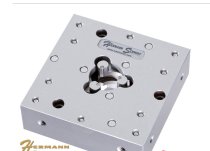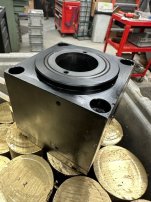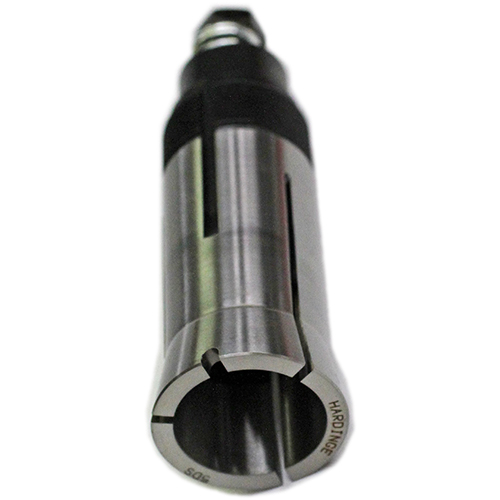implmex
Diamond
- Joined
- Jun 23, 2002
- Location
- Vancouver BC Canada
Hi All:
I've been working to commission a Haas DT2 with a TRT 100 on it.
I am looking to find the best dead length collet solution for it.
Those who know the TRT100 know it's TINY... 4" diameter platter.
The through hole is also tiny...maybe 1/2 inch (I haven't measured it.)
My choices for a dead length setup as I see it are:
1) A good quality baby 3 jaw chuck I can bolt to an adapter plate and then bolt it to the platter.
2) build a collet system with cylindrical backs and a tapered nose with a taper nose collet nut.
3) Try to find something...maybe a wire EDM self centering chuck like this:

This is 5 thousand bucks USD...kind of overkill but it is more accurate than a collet and it IS dead length.
Anyone have any other ideas?
Cheers
Marcus
www.implant-mechanix.com
www.vancouverwireedm.com
I've been working to commission a Haas DT2 with a TRT 100 on it.
I am looking to find the best dead length collet solution for it.
Those who know the TRT100 know it's TINY... 4" diameter platter.
The through hole is also tiny...maybe 1/2 inch (I haven't measured it.)
My choices for a dead length setup as I see it are:
1) A good quality baby 3 jaw chuck I can bolt to an adapter plate and then bolt it to the platter.
2) build a collet system with cylindrical backs and a tapered nose with a taper nose collet nut.
3) Try to find something...maybe a wire EDM self centering chuck like this:

This is 5 thousand bucks USD...kind of overkill but it is more accurate than a collet and it IS dead length.
Anyone have any other ideas?
Cheers
Marcus
www.implant-mechanix.com
www.vancouverwireedm.com











